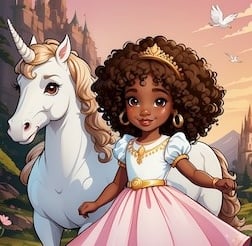The Colors of Inclusion: Accurate Representation in Children's Coloring Books
Explore the significance of accurate representation in children's coloring books and how it fosters a sense of belonging and understanding. Learn why it's essential to strike a balance between representation and creative freedom, ensuring that every child can both see themselves in the pages and unleash their imaginations. Discover how coloring books can be a canvas for both diversity and dreams.
Roni Haugh
Coloring books have long been a cherished childhood pastime, providing young minds with a canvas to explore their creativity and express themselves. While the joy of coloring is universal, the contents of coloring books have not always reflected the beautiful diversity of the world around us. In recent years, there has been a growing recognition of the importance of accurate representation in children's coloring books, even as we acknowledge the need for creative freedom.
The Power of Representation
Accurate representation in children's coloring books is not just about ensuring that every child can find a character that looks like them on the pages. It's about fostering a sense of belonging and self-worth. When children see characters who share their racial, cultural, or physical attributes, they feel validated and understood. They learn that their stories and experiences matter.
Representation also plays a significant role in breaking down stereotypes and promoting cultural understanding. It's an opportunity to teach children from a young age that the world is beautifully diverse, and it's something to celebrate. It encourages empathy and respect for others, as they see the world from different perspectives.
Going Beyond Boundaries
While accurate representation is crucial, there is still room for creative exploration in coloring books. In fact, it's essential to balance the importance of representation with the need for imaginative freedom. Here's why:
1. Creativity: Coloring books should be a space where children can let their imaginations run wild. While it's essential to have pages that accurately represent real-life people and experiences, it's equally vital to have pages that are open to interpretation.
2. Inclusivity: Inclusivity doesn't mean that every page should be confined to representing real people. It means that there should be a variety of options available. Children should have the choice to color characters and scenes from diverse backgrounds and cultures.
3. Empowerment: By allowing children to create their own characters and stories, coloring books empower them to be creators, not just consumers. It's a space where they can expand their horizons and build their narratives.
The Path Forward
The importance of accurate representation in children's coloring books cannot be overstated. It's a reflection of the world we live in, a celebration of our differences, and a powerful tool for teaching empathy and understanding. However, this representation should coexist with the opportunity for creative exploration.
As creators, parents, and educators, it's our responsibility to provide a balanced selection of coloring books that accurately depict the world and at the same time encourage children to embrace their imagination. It's about offering a spectrum of possibilities, from pages that depict real-life diversity to those that ignite the fires of creativity.
In the end, coloring books should be a reflection of the vast tapestry of human experiences, but they should also be a canvas for the dreams and aspirations of every child. Accurate representation and creative freedom can, and should, go hand in hand, ensuring that our children grow up with open hearts and open minds.


